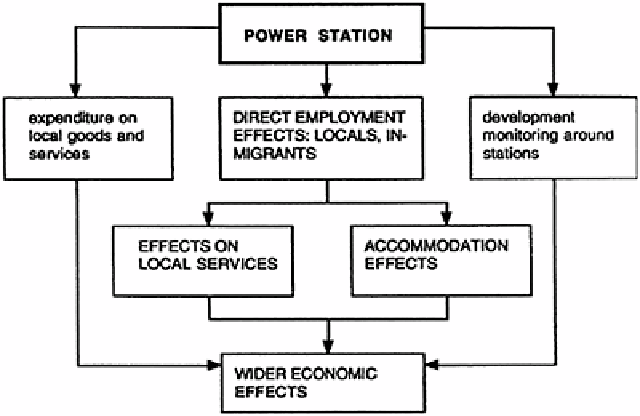Environmental Engineering Reference
In-Depth Information
Figure 4.4
Socio-economic process
diagram for a major project.
activities. For example, the population of a species of fish in a lake may already be
declining before the proposed introduction of an industrial project on the lake shore.
Figure 1.6 illustrated the various time, component and scale dimensions of the
environment, and all these dimensions need to be considered in the establishment of the
environmental baseline. The period for the prediction of the future state of the
environment should be comparable with the life of the proposed development; this may
mean predicting for several decades. Components include both the biophysical and
socioeconomic environment. Spatial coverage may focus on the local, but refer to the
wider region and beyond for some environmental elements.
Initial baseline studies may be wide-ranging, but comprehensive overviews can be
wasteful of resources. The studies should focus as quickly as possible on those aspects of
the environment that may be significantly affected by the project, either directly or
indirectly:
environmental statements [need not] cover every conceivable aspect of a
project's potential environmental effects at the same level of detail. They
should be tailored to the nature of the project and its likely effects… In
some cases, only a few [environmental aspects] will be significant in this
sense and will need to be discussed in the statement at any great depth.
Other issues may be of little or no significance for the particular project in
question, and will need only very brief treatment, to indicate that their
possible relevance has been considered (ODPM 2003a).
The rationale for the choice of focus should be explained as part of the documentation of
the scoping process. Although the studies would normally consider the various





Search WWH ::

Custom Search